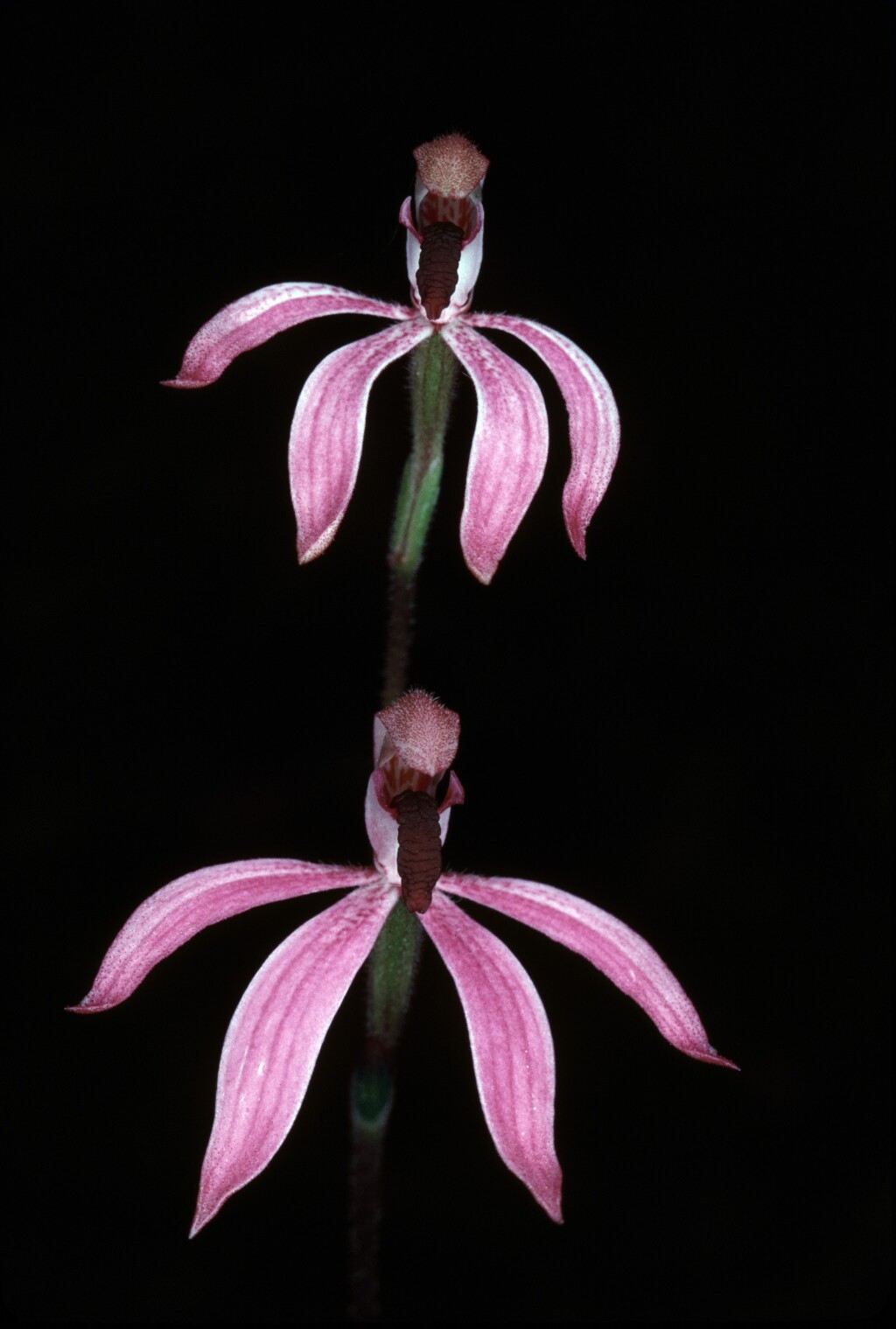Caladenia congesta
R.Br. Black-tongue CaladeniaFlowering plant very slender 15–60 cm tall. Leaf linear, 8–18 cm long, 2–3 mm wide. Flowers 1–3, bright pink with conspicuous black labellum tip; ovary 7–9 mm long; perianth segments 16–20 mm long, acute at apex, outside with numerous dark red glandular hairs; dorsal sepal incurved over (and slightly around) the column, lanceolate; lateral sepals spreading or obliquely deflexed, lanceolate, asymmetric, usually broader than petals; petals spreading, lanceolate, slightly asymmetric. Labellum on short claw, 3-lobed, 8–10 mm long, 4.5–5.5 mm wide (when flattened), pink; lateral lobes elongate, acute anteriorly, erect or slightly spreading, margins entire; mid-lobe recurved, oblong-lanceolate, elongate and narrow, margins entire; lamina calli very closely spaced in two rows, becoming congested at apex, basal pair stalked, remainder sessile, dark crimson to black, shiny. Column incurved, relatively widely winged above, blotched with pink markings; anther with short point. Flowers Oct.–Jan.
Wim, GleP, VVP, GipP, OtP, Gold, CVU, GGr, DunT, NIS, EGL, EGU, WPro, HSF, HNF, OtR, Strz, MonT, VAlp. Also SA, NSW, ACT, Tas. Grows in coastal scrub and woodlands on sandy or peaty soil extending to foothill forests and subalps on shallow, stony soils. Widespread but not common.
The black congested calli covering the labellum tip make this a distinctive species unlikely to be confused with any others.
Entwisle, T.J. (1994). Orchidaceae. In: Walsh, N.G.; Entwisle, T.J., Flora of Victoria Vol. 2, Ferns and Allied Plants, Conifers and Monocotyledons, pp. 740–901. Inkata Press, Melbourne.
 Spinning
Spinning


